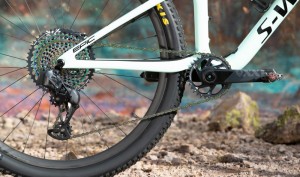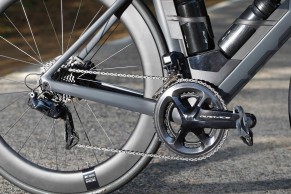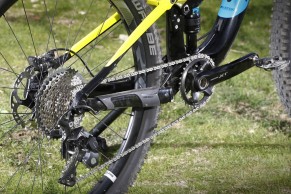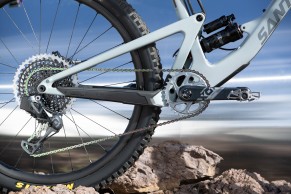Do you really need an electronic shifting?
With the development of electronic gearboxes some years ago, another variable was added to the difficult decision of choosing a bike or mountain bike and its equipment. That's why making a decision of this calibre, between mechanical and electronic shifting, is not easy.

Advantages of electronic shifting
The introduction of Shimano's Dura-Ace Di2 first, and the SRAM Red eTap later, was a real revolution. Firstly, because an electronic shifting has many points in its favour, it is undeniable. That's why we're going to try to list those pros and then contrast them with the cons of electronic gearboxes and try to answer the real question: do you need an electronic shifting on your bike or mountain bike?

RECOMENDADO

Guidelines for a perfect and safe tanned cyclist

How much money a cyclist can make in the Tour de France 2024?

Ketone, the drink of military origin for which Dumoulin quits the MPCC

Benefits of not drinking a drop of alcohol

Puncture-proof SmartMousse for mountain bike, do you need it?

Scott Spark Supersonic, Schurter's MTB for the World Cup and the World Championships
An electronic shifting, as we say, has plenty of arguments to convince you:
-
The introduction of more technology into cycling is often seen as synonymous with more electronics. Not just in cycling, really. But this is not completely accurate: a technology is not directly related to electronics, but it is true that this relationship has gone hand in hand in recent years. So yes, setting up an electronic gearbox means implementing a higher degree of technology. Of course, perhaps it is more important to mount a good chainring or a good chain, but the exoticism of technology in sport is a point in favour of electronic gearboxes.

- But this is not only a subjective aspect, electronic shifting, of course, has obvious aspects. The ease of change is perhaps one of the most outstanding: with a small click, the work is done automatically. No cable is stretched, only an order is given.

- In addition to the ease, the accuracy of the electronic shifting is higher. It leaves no room for human inaccuracy, or relative perception of precision. If you set the third sprocket, the machine sets exactly the third sprocket.

- This also makes it possible to place the shifters in different places, as their communication is wireless. You avoid wiring and avoid maintenance of it, and you clean the handlebars of levers and covers.

- As regards this adjustment and positioning, it must be said that the potential of the mountain bike is even greater, because the misalignment in mountain biking is usually greater due to the movement experienced by all the components of the bike. With the electric shifting, this adjusts itself.

- Finally, the electric gearbox will give you more information about the way you drive. Collecting this information and then analysing it with professionals and more peace of mind can make you a better cyclist, because choosing when to shift and what development to put in is also a science.
Cons of electronic shifting
The detractors of electronic shifting will be angry after reading the previous paragraphs, but we will also give them arguments against it so that they can see that there are of course reasons for it.
- Electronic shifting is expensive. That is right, the price, which is often a major factor in the decision, does not help its implementation. Because for the average cyclist, who does not need so much precision or so much automation, paying out the more than 1000 euros that a good electronic gearbox usually costs is not a minor decision. For most, it is totally out of the question.

- But in addition, the cost of maintenance is also higher. Those who have been doing their own basic mechanics for years will know that they can repair and adjust their bike or mountain bike with just four tools. But some problems and breakdowns of the electronic gearbox require a visit to the workshop.

- Moreover, this argument of the difficulties of independent repair is aggravated if your type of cycling is an ultra-marathon or you ride in inhospitable places. Because in the event of a breakdown, you're sure to be left stranded. Mechanics without electronics is based on physics, so with pliers and wire, as the elderly would say, you can fix almost anything. But a breakdown of an electronic gearbox in the middle of a desert would be an unbearable risk, which is why they are not usually used in this type of test.

- .For those who take their bikes occasionally, the time spent looking after the charge and the batteries is also a loss. The personal conditions of each person sometimes make it impossible to know for sure when and how you are going to go out cycling. So having any charging routine, for example, is an odyssey. With a mechanical change you don't have this problem: you just start and start again.

- Finally, an electronic gearbox is heavier. Yes, it requires certain components, especially the batteries, which weigh more than the advanced designs of mechanical gearboxes. Yes, the difference is not abysmal, but it does weigh more and that is a point against the electronic shifting.

In short, electronic shifting has its pros and cons, of course. Our position is clear: the average cyclist does not need an electronic gearbox. That's how clear it is. Because the advantages it can bring, which are many, do not outweigh the buts. However, the decision is, of course, entirely personal.








